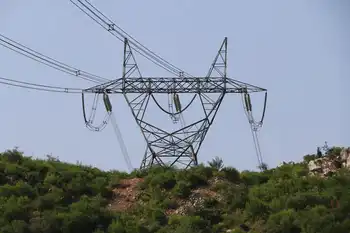Westinghouse plant design rejected
By New York Times
Arc Flash Training CSA Z462 - Electrical Safety Essentials
Our customized live online or in‑person group training can be delivered to your staff at your location.

- Live Online
- 6 hours Instructor-led
- Group Training Available
The rejection raises the possibility of delays in building 14 planned reactors in the United States, including two twin-reactor projects in Georgia and South Carolina that are leading the pack. Westinghouse, which is owned by Toshiba, promised to conduct tests as quickly as possible to try to satisfy the agency staff that the design was sound.
The new reactor, called the AP1000, is intended to be faster to build and safer to run than previous models. The letters stand for “advanced passive” and the number is the estimated electrical output in megawatts.
Resolving design issues before construction is viewed as a crucial part of the nuclear industryÂ’s plan for a revival without the delays and cost overruns that bedeviled the industry in the 1970s and Â’80s.
The agency staffÂ’s decision, relayed in a letter to Westinghouse, is a glitch in the move toward licensing changes adopted by the commission in the 1990s. The goal was to establish a system through which a library of pre-approved, standardized designs would be available whenever a company set out to build a reactor.
In a conference call with reporters, David Matthews, director of the division of new reactor licensing in the commission’s Office of New Reactors, said staff members were not convinced that a crucial part of the design, a structure called a shield building, would protect the reactor from “external” events like earthquakes, tornadoes and high winds.
The shield consists of 35 inches of concrete sandwiched between two sheets of steel, each of which is half an inch thick. Existing Westinghouse reactors, designed in the 1960s and Â’70s, do not have shield buildings.
In another shift, the new design puts the emergency cooling water on the roof, so that no pumps are needed to deliver it in case of an accident.
Ed Cummins, vice president for regulatory affairs at Westinghouse, said that his company had designed the shield wall to meet a different commission requirement, that the plant be able to withstand the impact of an airliner. But the change had caused the commission staff to question the designÂ’s adequacy to meet natural hazards.
Mr. Cummins said the company was setting up a series of tests, mostly of full-scale models of small parts of the structure, to demonstrate that the shield building could meet the anticipated loads. Utilities in Georgia and South Carolina have begun clearing sites for construction.
Westinghouse did not expect the commission’s concerns to have a “significant impact” on the construction schedule, Mr. Cummins said.
But he added that company officials and the commission staff had not yet determined what kind of work would be needed to demonstrate the structureÂ’s safety.











